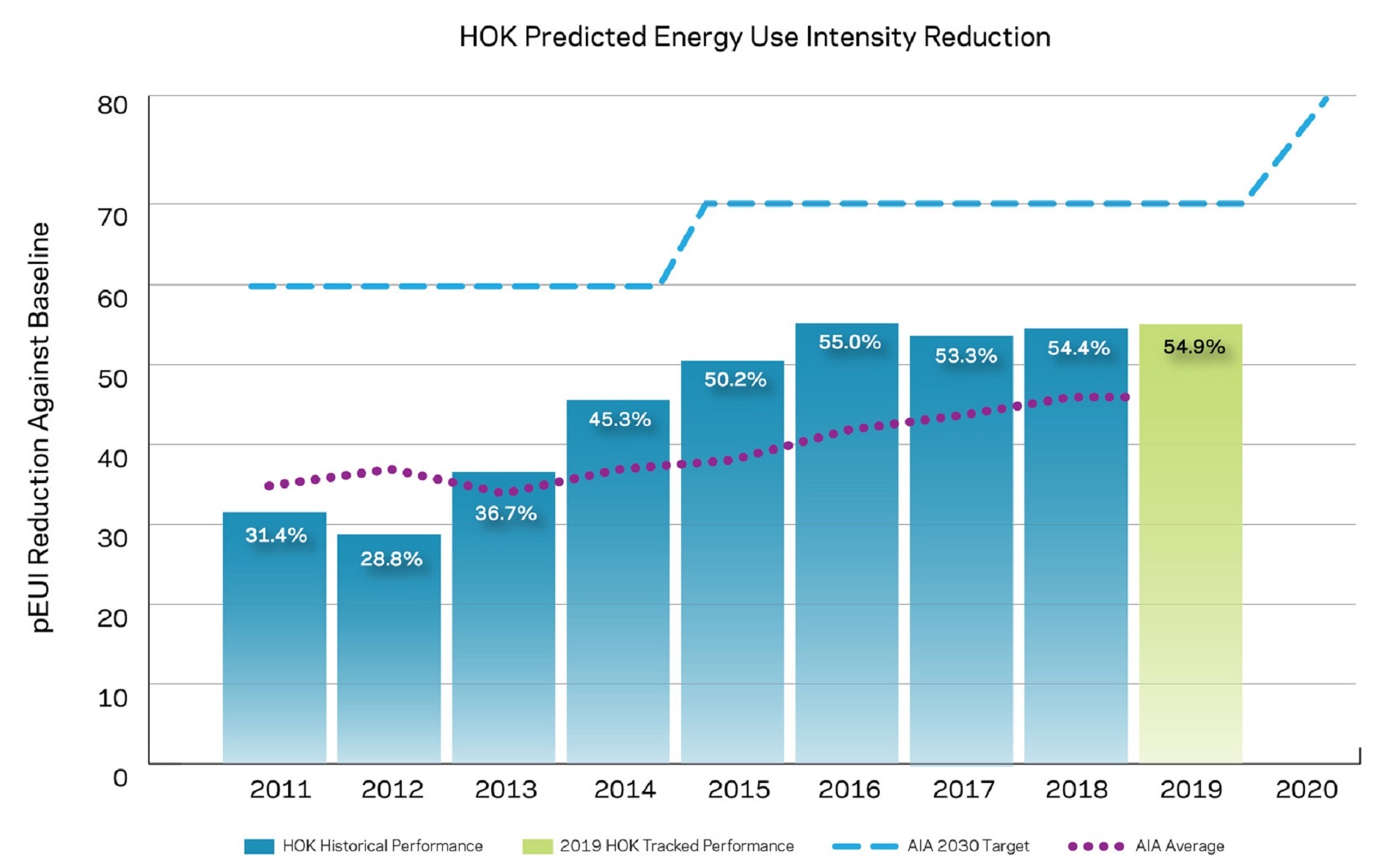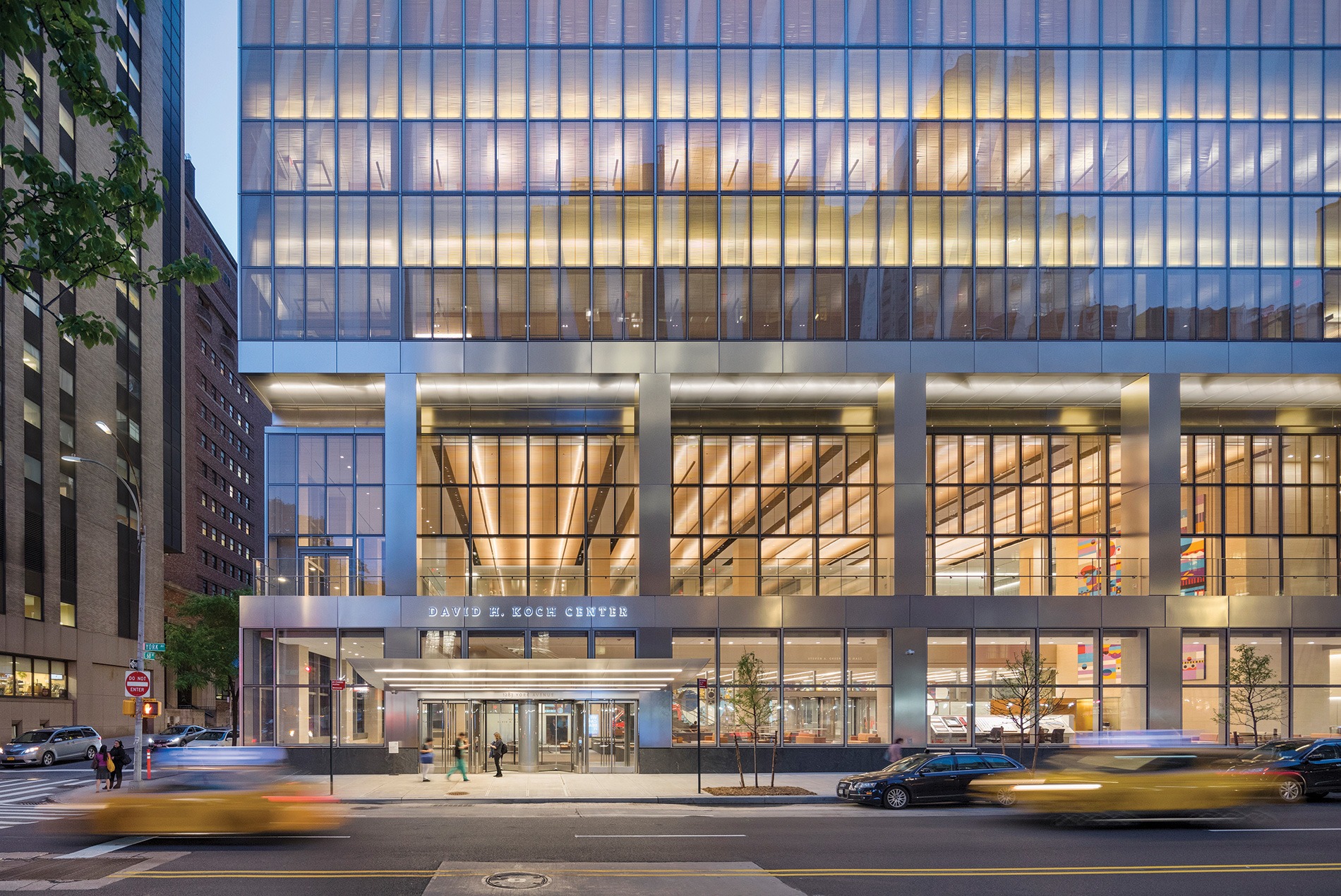Update: See our 2025 news story for a more recent progress report on HOK’s AIA 2030 Commitment.
At the halfway mark of the AIA 2030 Commitment, HOK projects have reduced energy consumption by more than 50 percent and track better than the industry average.
In 2010, the American Institute of Architects (AIA) challenged the global design and construction community to achieve carbon neutrality for all new buildings, developments and major renovations by 2030. The AIA 2030 Commitment specifically encourages firms to transform the practice of architecture to respond to the climate crisis in a holistic, project-based and data-driven manner. As a leader in sustainable design, HOK was one of the first design firms to sign on to the commitment.
A decade into our commitment, we can report that in 2019 our projects tracked a firm-wide 54.9 percent reduction of energy use intensity from the baseline level established by the U.S. Energy Information Administration’s Commercial Building Energy Consumption Survey (CBECS). This places us ahead of many of our industry peers and above the AIA average in terms of energy reduction. Still, much work remains to fully accomplish our mission.

“We recognize that transparency is key to the success of the 2030 program and acknowledge the importance of tracking our progress and sharing results,” said Anica Landreneau, HOK’s director of sustainability. “Given the size and complexity of many of the projects we design—like hospitals, labs, airports, stadiums and many substantial renovations—the 2030 challenge is particularly challenging for HOK and firms that do similar work. But we are hyperfocused on our commitment and remain on track to achieve a carbon-neutral portfolio by 2030.”
Significant HOK projects recently recognized for their energy performance and sustainability include the Kentucky International Convention Center in Louisville (LEED Silver), Bay Meadows Urban Village in San Mateo, California (LEED Gold), Mercedes-Benz Stadium in Atlanta (LEED Platinum) and the NewYork-Presbyterian David H. Koch Center, which was the first project in New York state to achieve LEED Gold under the more stringent LEED Healthcare rating system.

NewYork-Presbyterian David H. Koch Center is the first project in New York state to achieve LEED Gold under the more stringent LEED Healthcare rating system.
“The need to set energy-use targets and benchmark-modeled energy assumptions at specific project intervals has brought value to our clients and more rigor to our practice,” said Landreneau. “Setting energy efficiency targets earlier and benchmarking more frequently in the design process enables our designers to identify significant first-cost and operational savings for clients and share best practices with each other to improve the performance of all our projects.”
Related: Anica Landreneau: HOK on Track to Achieve Carbon-Neutral Design Portfolio by 2030
